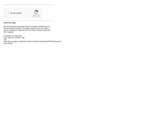
Lungs of the Earth- Earth & Space Science - Grades 9-12
- Subject:
- Biology
- Life Science
- Material Type:
- Lesson Plan
- Date Added:
- 07/18/2022

Lungs of the Earth- Earth & Space Science - Grades 9-12
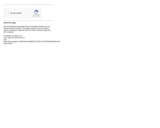
Swallows- Life Science - Grades 9-12
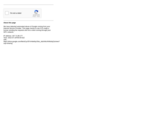
The Freezer's Defrosting - Life Science - Grades 9-12
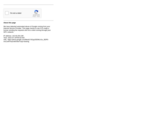
Touchscreen Devices - Physical Science - Grades 9-12
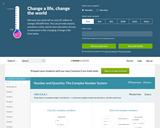
This site teaches The Complex Number System to High Schoolers through a series of 2195 questions and interactive activities aligned to 16 Common Core mathematics skills.
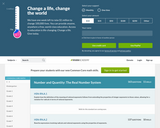
This site teaches The Real Number System to High Schoolers through a series of 1090 questions and interactive activities aligned to 8 Common Core mathematics skills.
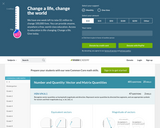
This site teaches Vector and Matrix Quantities to High Schoolers through a series of 2195 questions and interactive activities aligned to 16 Common Core mathematics skills.

In this lesson middle and high school students in grades 6-12, students will learn the basics of composing portraits of friends, this is designed to gain maximum engagement in the lesson. Following a basic photography lesson students will take four types of portraits to post and critique. Students will take a final photo at end of course, an improved shot of one prior image. All will be posted in an ePortfolio.
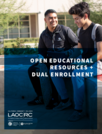
This practice brief provides guidance to help K12 and community college dual enrollment program instructors and administrators identify and implement programs using open educational resources (OERs). This practice brief focuses on how OERs can remove potential barriers to students’ access to higher education by promoting textbook affordability for all students. As high schools typically cover the cost of textbooks and other course materials, the costs of college textbooks may deter high school students from considering dual enrollment programs, particularly low-income students. The integration of OERs in dual enrollment courses may help mitigate this barrier.

Deze cursus bestaat uit lesmodules te gebruiken in de bovenbouw van het Havo en het VWO met als onderwerp Optimaliseren in netwerken. Het materiaal is gemaakt door een kerngroep van vwo-docenten, aangevuld met universitaire medewerkers. Docenten kunnen er invulling mee geven aan het domein "Wiskunde in wetenschap" van het vak wiskunde D.
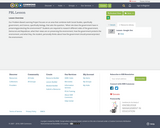
Our Problem-Based Learning Project focuses on an area that combines both Social Studies, specifically government, and Science, specifically biology, that asks the question, "What role does the government have in preserving/protecting the environment?" Students are required to research different sides of the government, Democrat and Republican, what their views are on preserving the environment, how the government protects the environment, and what they, the student, personally thinks about how the government should preserve/protect the environment.

The purpose of this 3 ACT task is to provide students with an opportunity to problem solve based on a real-world situation. In the task, students are presented with a scenario faced by Washington State logging companies transporting timber to mills after harvest. Students then decide on necessary resources for finding the solution and are given time as a group to complete their work. The task concludes by having students examine the information provided in Act Three to see if it answers their question. Includes slides to support the implementation of "Get the Logs to the Mill (Algebra)" Math Performance Task with charts, images, etc.

The purpose of this 3 ACT task is to provide students with an opportunity to problem solve based on a real-world situation. In the task, students are presented with a map of a Bull Kelp bed near Squaxin Island and asked to generate their own questions that could be answered using the map. Students then decide on necessary resources for finding the solution and are given time as a group to complete their work. The task concludes by having students examine the information provided in Act three to see if it answers their question. Includes slides to support the implementation of "Keeping An Eye On Kelp (Algebra)" Math Performance Task with charts, images, etc.

The purpose of this 3 ACT task is to provide students with an opportunity to problem solve based on a real-world situation. In the task, students are presented with a scenario faced by Washington State logging companies: replanting timber after a harvest or catastrophic burn. This is a complex and rich problem wherein students will need to determine an explicit expression or steps for calculation from the context provided. Students must decide on necessary resources for finding the solution and are given time as a group to complete their work. Includes slides to support the implementation of "Replanting Timberland (Algebra)" Math Performance Task with charts, images, etc.

The purpose of this 3 ACT task is to provide students with an opportunity to problem solve based on a real-world situation. In the task, students are presented with a map of a Bull Kelp bed near Squaxin Island and asked to generate their own questions that could be answered using the map. Students then decide on necessary resources for finding the solution and are given time as a group to complete their work. The task concludes by having students examine the information provided in Act three to see if it answers their question. Includes slides to support the implementation of "Keeping An Eye On Kelp (Algebra)" Math Performance Task with charts, images, etc.

Se presentará a los estudiantes un relato histórico del cambio climático global y las acciones humanas que pueden haber afectado esos cambios. El fuego ha sido utilizado por los seres humanos a lo largo de la historia para modificar su entorno, en particular los bosques, en beneficio de los seres humanos. Con el tiempo, el manejo de los bosques ha cambiado y el resultado es un aumento de incendios forestales catastrófico. Este caso explora el uso del fuego como una herramienta de manejo forestal para mejorar la salud de los bosques, disminuyendo así la incidencia de incendios catastróficos y el papel que juega el fuego en el cambio climático.
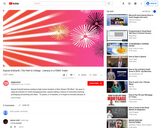
Kaycee Eckardt teaches reading to high school students in New Orleans' 9th Ward. Her goal, to equip all scholars for world-changing pursuits, requires taking a chance on innovative teaching, prototyping and piloting new ideas. "To pause, or to hesitate, or to forget to innovate because of fear, that's the only moment that we will fail."
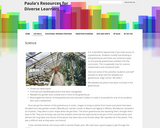
It is a wonderful opportunity if you have access to a greenhouse. Students usually love working in the greenhouse and there are numerous ways to incorporate greenhouse activities into the curriculum. This is especially true for science, mathematics and vocational skills.
This webpage is a narrative of some of the activities students and staff worked on when we first adopted our greenhouse. Included are learning activities for high school students in a "life skills" program. A few related handouts are included as attached files.

Secondary educators across Lebanon County, Pennsylvania developed lesson plans to integrate the Pennsylvania Career Education and Work Standards with the content they teach. This work was made possible through a partnership between the South Central PA Workforce Investment Board (SCPa Works) and Lancaster-Lebanon Intermediate Unit 13 (IU13) and was funded by a Teacher in the Workplace Grant Award from the Pennsylvania Department of Labor and Industry. This lesson plan was developed by one of the talented educators who participated in this project during the 2018-2019 school year.
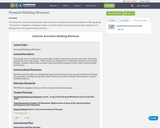
Too many of our students are physically unable to perform movements that should be simple for their age group. This workout is designed to challenge students out of their fitness comfort zone without deterring them from wanting to live a life of good health and fitness.